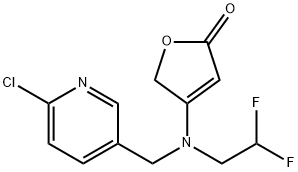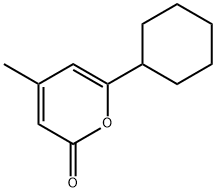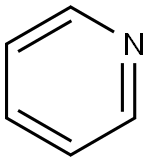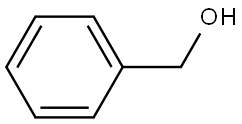Flupyradifurone
Synonym(s):4-[(6-Chloro-3-pyridylmethyl)(2,2-difluoroethyl)amino]furan-2(5H)-one
- CAS NO.:951659-40-8
- Empirical Formula: C12H11ClF2N2O2
- Molecular Weight: 288.68
- MDL number: MFCD22373627
- SAFETY DATA SHEET (SDS)
- Update Date: 2024-11-19 23:02:33

What is Flupyradifurone?
Description
Flupyradifurone(FPF) is a novel butenolide insecticide developed for foliar, soil and seed treatment applications (Nauen et al., 2015). FPF was commercially introduced to the market in 2014 as an integrated pest management (IPM)-friendly tool (Bordini et al., 2021), and is registered for use in a wide variety of fruit and vegetable crops and defined broad acre crops. It targets some of the world′s most destructive sucking pests including aphids, psyllids, scales, leafhoppers, mealy bugs, and is particularly important for the control of whiteflies such as Bemisia tabaci, a vector of serious phytopathogenic viruses such as tomato yellow leaf curl virus and cucurbit yellow stunting disorder virus (Castle et al., 2017; Roditakis et al., 2017).
The Uses of Flupyradifurone
Flupyradifurone is the first member of butenolide class of insecticides. Its mode of action is similar to neonicotinoid insecticides that act on the central nervous system of target insect pests as an agonist of the nicotinic acetylcholine receptor (nAChR). However, its chemical structure differs from the nitroguanidine neonicotinoids and thus it is a separate sub-class of IRAC Group 4. Flupyradifurone is a systemic insecticide and targets piercing, sucking insects such as aphids and whiteflies. The EPA has registered flupyradifurone on berries (except cranberry), cereal grains (except rice), alfalfa, clover, and vegetables (except sugar beet), fruits, and ornamental plants. On soybean flupyradifuron is registered for foliar and seed treatment use only. Flupyradifurone is formulated as soluble liquid (SL) and flowable concentrate (FS). Application to soybean seeds is approved via commercial seed treatment application only.
Definition
ChEBI: Flupyradifurone is a tertiary amino compound that is ammonia in which the nitrogens have been replaced by (6-chloropyridin-3-yl)methyl, 2,2-difluoroethyl, and 5-oxo-2,5-dihydrofuran-3-yl groups, respectively. A nicotinic acetylcholine receptor (AChR) agonist, it is used as an insecticide to control sucking pests in a variety of crops. It has a role as a nicotinic acetylcholine receptor agonist and an insecticide. It is a butenolide, a monochloropyridine, an organofluorine insecticide, an enamine and a tertiary amino compound.
Preparation
Two different pathways for the synthesis of flupyradifurone
Starting from tetronic acid, one approach consists in two consecutive reactions. Where the tetronic acid reacts firstly with a difluoroethane-1-amine and secondly with 2-Chloro-5- (chloromethyl)pyridine. 
And the other approach, where the tetronic acid reacts with difluoroethane-1-amine derivative in the presence of 4-toluenesulfonic acid in a “one pot” approach to yield flupyradifurone.
Properties of Flupyradifurone
| Melting point: | 69 - 71°C |
| Boiling point: | 457.7±45.0 °C(Predicted) |
| Density | 1.41±0.1 g/cm3(Predicted) |
| storage temp. | Refrigerator |
| solubility | DMSO (Slightly, Sonicated), Methanol (Slightly) |
| pka | 0.22±0.10(Predicted) |
| form | neat |
| form | Solid |
| color | White to Pale Brown |
| BRN | 19518067 |
| EPA Substance Registry System | 2(5H)-Furanone, 4-[[(6-chloro-3-pyridinyl)methyl](2,2-difluoroethyl)amino]- (951659-40-8) |
Safety information for Flupyradifurone
| Signal word | Warning |
| Pictogram(s) |
 Exclamation Mark Irritant GHS07  Health Hazard GHS08  Environment GHS09 |
| GHS Hazard Statements |
H302:Acute toxicity,oral H373:Specific target organ toxicity, repeated exposure H410:Hazardous to the aquatic environment, long-term hazard |
| Precautionary Statement Codes |
P260:Do not breathe dust/fume/gas/mist/vapours/spray. P264:Wash hands thoroughly after handling. P264:Wash skin thouroughly after handling. P270:Do not eat, drink or smoke when using this product. P273:Avoid release to the environment. P314:Get medical advice/attention if you feel unwell. P301+P312:IF SWALLOWED: call a POISON CENTER or doctor/physician IF you feel unwell. |
Computed Descriptors for Flupyradifurone
New Products
4-AMINO-TETRAHYDRO-PYRAN-4-CARBOXYLIC ACID HCL 4-(Dimethylamino)tetrahydro-2H-pyran-4-carbonitrile 4-AMINO-TETRAHYDRO-PYRAN-4-CARBOXYLIC ACID 4-Aminotetrahydropyran-4-carbonitrile Hydrochloride (R)-3-Aminobutanenitrile Hydrochloride 5-Bromo-2-nitropyridine Nimesulide BP Aceclofenac IP/BP/EP Diclofenac Sodium IP/BP/EP/USP Mefenamic Acid IP/BP/EP/USP Ornidazole IP Diclofenac Potassium 3-Bromopyrazole (3aR,4R,5R,6aS)-hexahydro-5-Triethyl silyloxy-4-((E)-3-oxo-5-phenylpent-1- enyl)cyclopenta[b]furan-2-one. 1-Chlorocarbonyl-4-piperidinopiperidine 1-Bromo-4-phenyl-2-Butanone 4-Amino-2-fluoro-N-methylbenzamide 1,1'-Carbonyldiimidazole SODIUM AAS SOLUTION ZINC AAS SOLUTION BUFFER SOLUTION PH 10.0(BORATE) GOOCH CRUCIBLE SINTERED AQUANIL 5 BERYLLIUM AAS SOLUTIONRelated products of tetrahydrofuran








You may like
-
 Flupyradifurone CAS 951659-40-8View Details
Flupyradifurone CAS 951659-40-8View Details
951659-40-8 -
 Flupyradifurone CAS 951659-40-8View Details
Flupyradifurone CAS 951659-40-8View Details
951659-40-8 -
![Dimethyl [2-oxo-3-[3-(trifluoromethyl)phenoxy]propyl]phosphonate 99%](https://img.chemicalbook.in//Content/image/CP5.jpg) Dimethyl [2-oxo-3-[3-(trifluoromethyl)phenoxy]propyl]phosphonate 99%View Details
Dimethyl [2-oxo-3-[3-(trifluoromethyl)phenoxy]propyl]phosphonate 99%View Details
54094-19-8 -
 85-81-4 99%View Details
85-81-4 99%View Details
85-81-4 -
![208111-98-2 (3aR,4R,5R,6aS)-5-(Benzoyloxy)hexahydro-4-[(1E)-3-oxo-4-[3-(trifluoromethyl)phenoxy]-1-buten- 1-yl]-2H-cyclopenta[b]furan-2-one 99%](https://img.chemicalbook.in//Content/image/CP5.jpg) 208111-98-2 (3aR,4R,5R,6aS)-5-(Benzoyloxy)hexahydro-4-[(1E)-3-oxo-4-[3-(trifluoromethyl)phenoxy]-1-buten- 1-yl]-2H-cyclopenta[b]furan-2-one 99%View Details
208111-98-2 (3aR,4R,5R,6aS)-5-(Benzoyloxy)hexahydro-4-[(1E)-3-oxo-4-[3-(trifluoromethyl)phenoxy]-1-buten- 1-yl]-2H-cyclopenta[b]furan-2-one 99%View Details
208111-98-2 -
 2033-24-1 99%View Details
2033-24-1 99%View Details
2033-24-1 -
 Meldrums acid 2033-24-1 99%View Details
Meldrums acid 2033-24-1 99%View Details
2033-24-1 -
 2-Aminopyridine 504-29-0 99%View Details
2-Aminopyridine 504-29-0 99%View Details
504-29-0